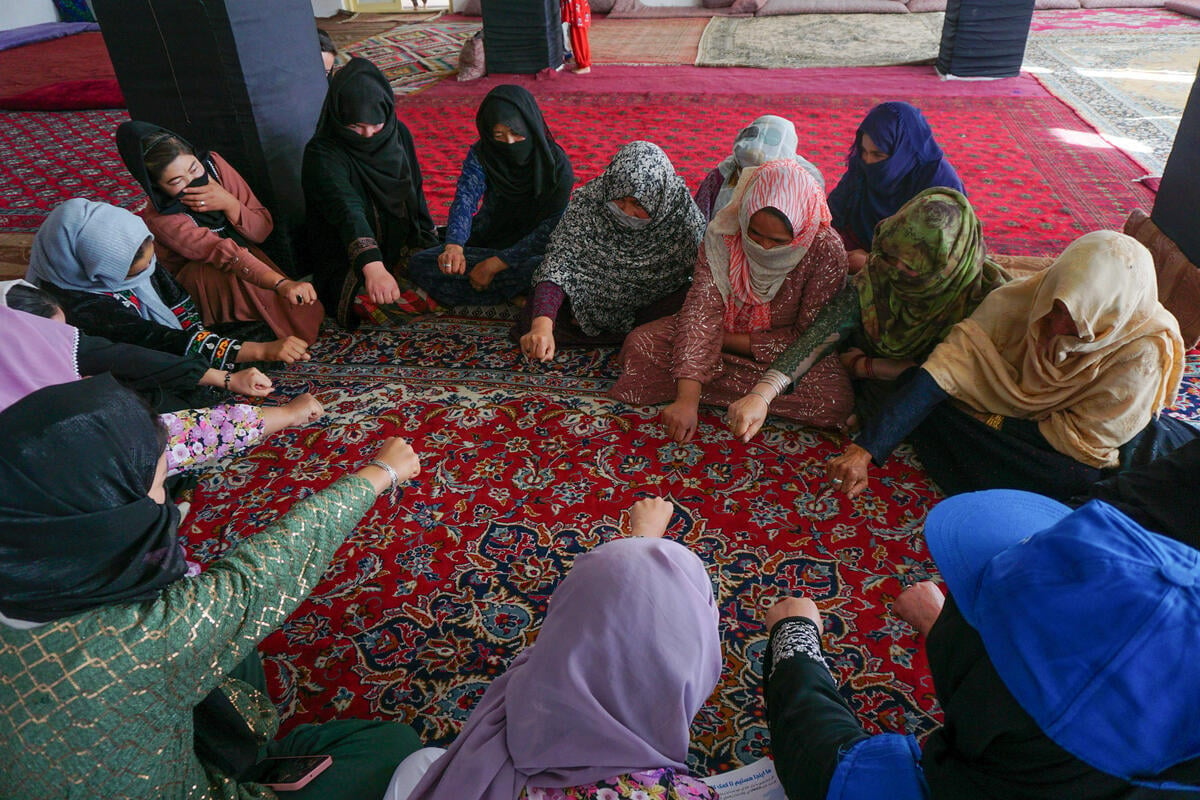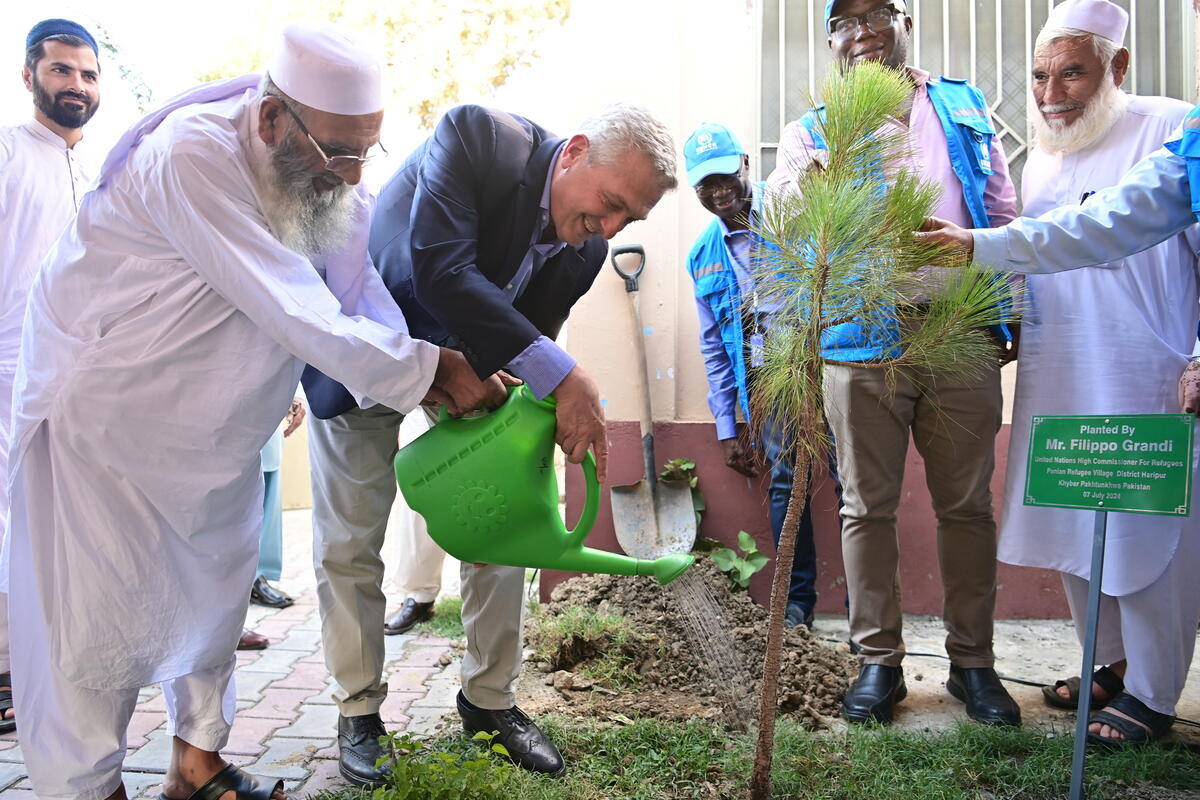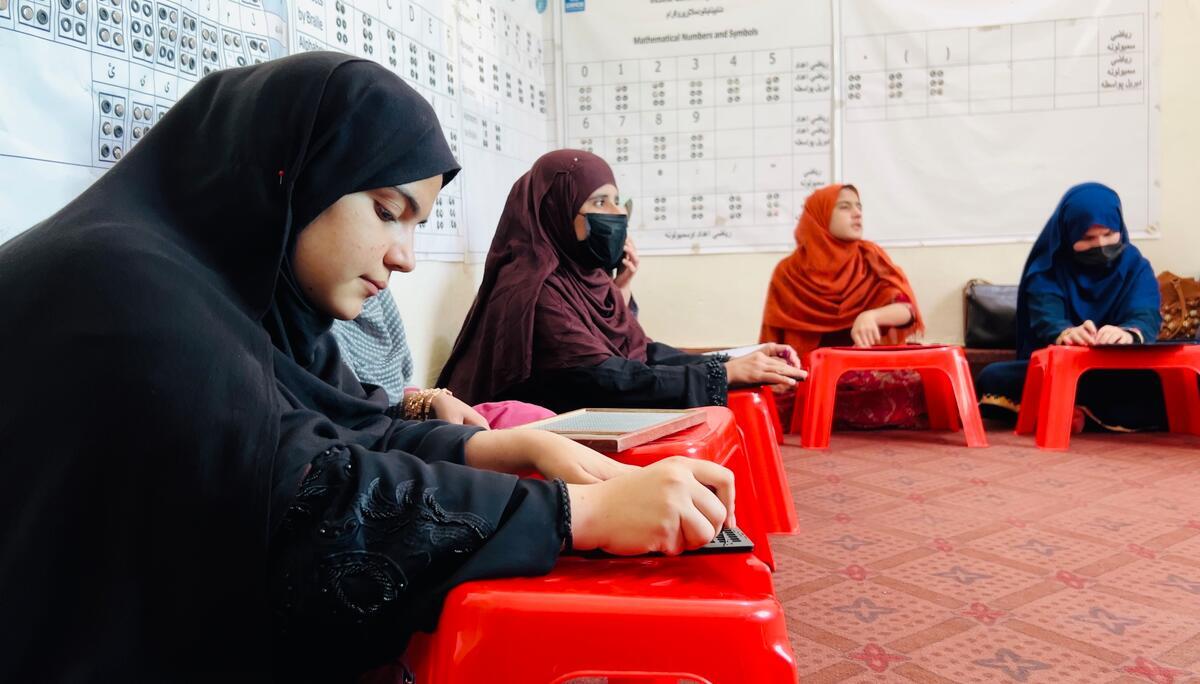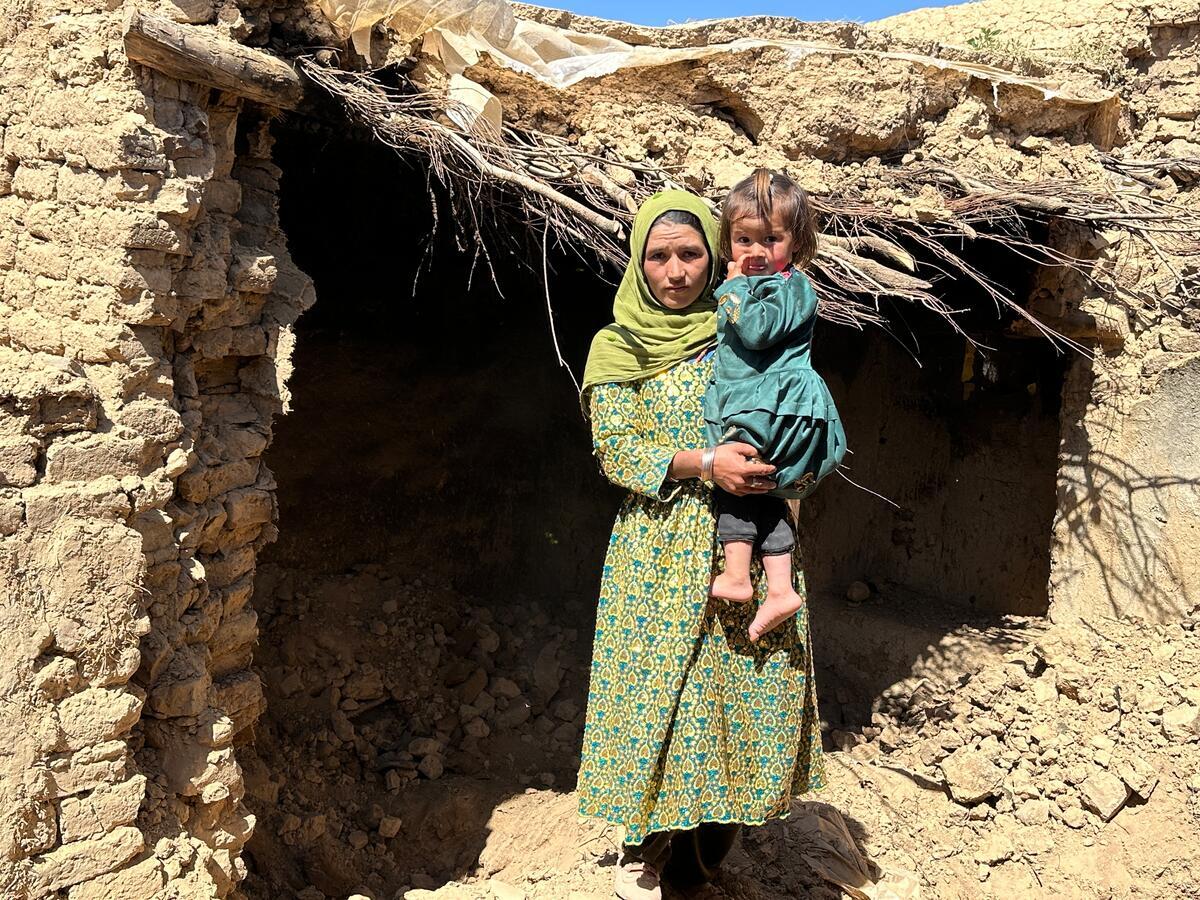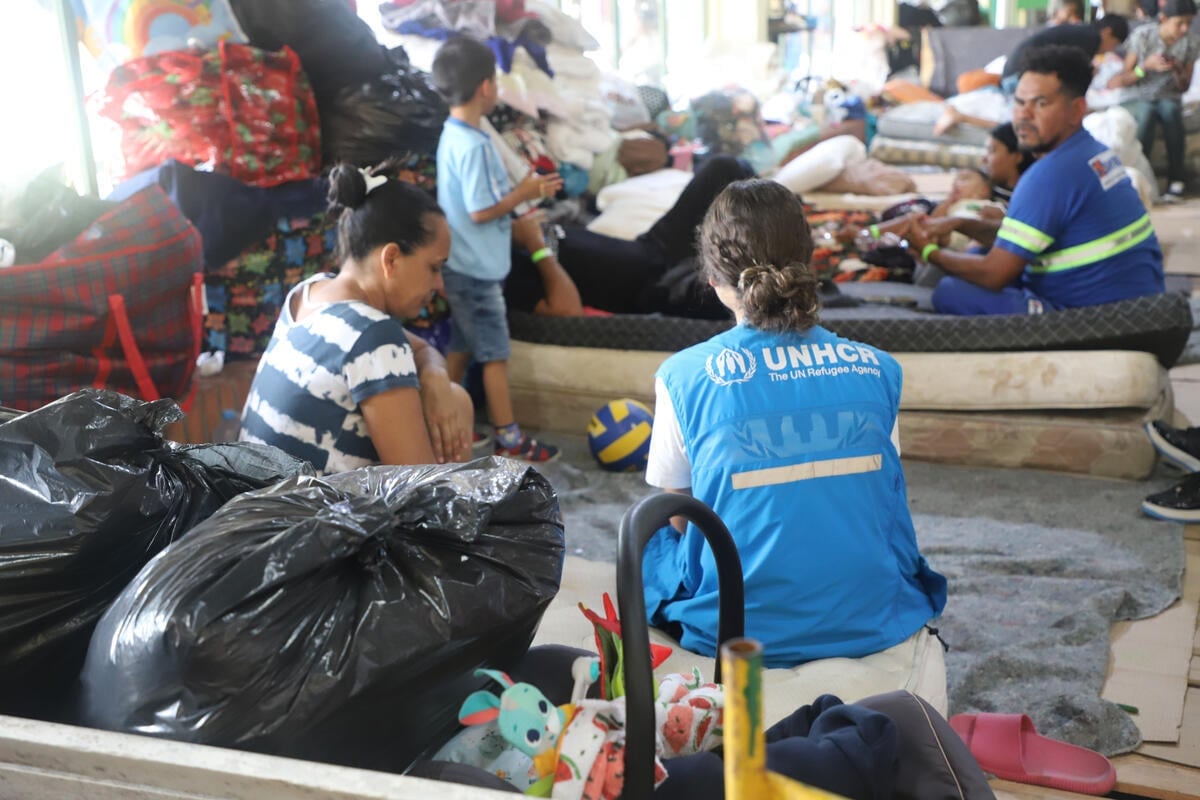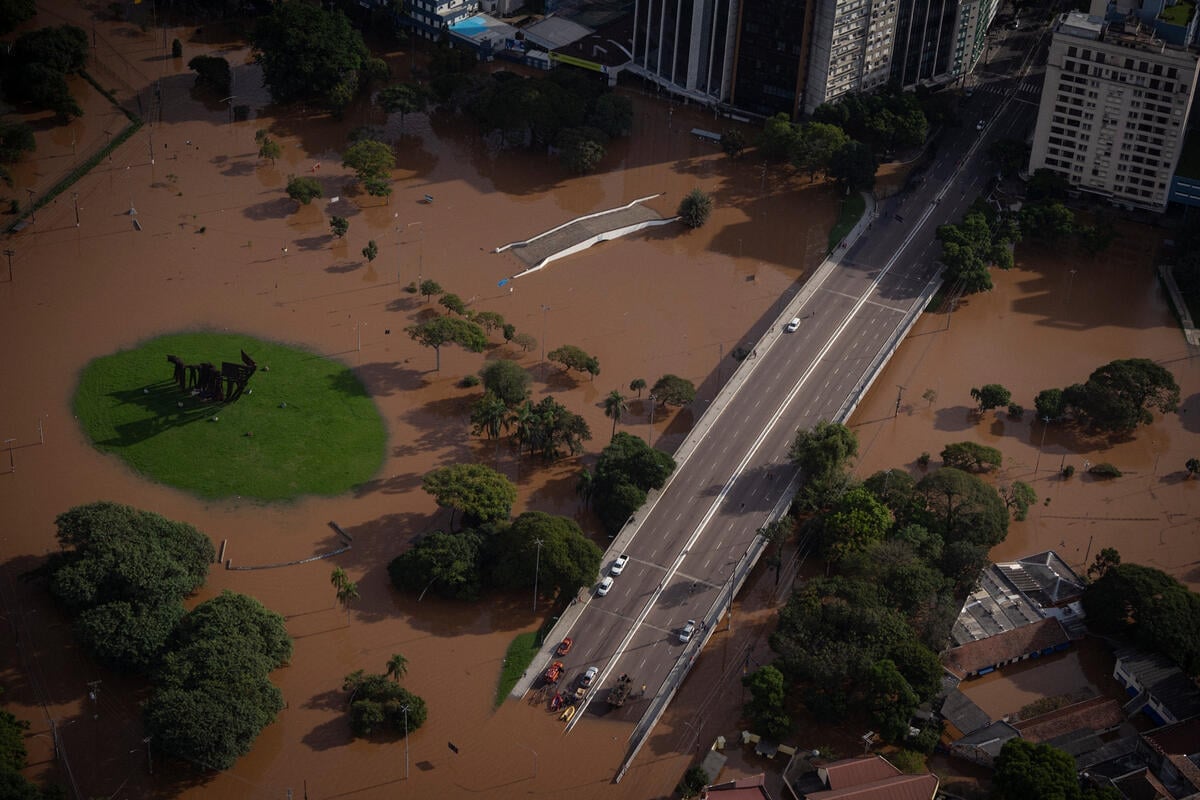Feature: A welcome stop for Afghans before home
Feature: A welcome stop for Afghans before home

KABUL, Afghanistan (UNHCR) - Every morning as UNHCR staff approach the distribution centre of Pul-i-Charkhi at the gates of Kabul, where returning Afghans arrive from Pakistan, they make a bet on how many trucks they will find waiting for them - 100, 200, or more.
"A few days ago, we were pulling up to the last big curve before Pul-i-Charkhi and it took our breath away," says UNHCR Community Services Officer Edoardo Albinati. "The area was bursting at the seams. There were at least 300, 350 trucks, carrying some 1,500 families, not counting the ones that would continue arriving throughout the day."
On a typical day, the trucks arrive during the night, when the centre is closed. The returnees wait till 7 a.m. for staff of the UN refugee agency to open the distribution centre and give them their travel assistance, wheat and utensils. Their journey has been long and trying. For those coming from around Peshawar, it probably lasted a couple of days. But some of them have arrived from as far away as Karachi, 2,000 km to the south, braving insecure road conditions along the way.
Teams of controllers scatter among the trucks. Their job is to check whether the registration forms of the families are in order so they can be allowed to proceed. "There are always a few without the proper documentation, who start to cry and beg for help. We have to avoid getting duped," says Albinati.
Many of Afghans are ill after the journey - dehydrated and stricken by diarrhoea. The often beautiful faces of the children are disfigured by scabs from leishmaniasis, an infectious disease transmitted by the bite of some species of sand flies. While the sick wait for medical checks, the others receive a briefing on landmines in a huge tent with a big table covered with disarmed landmines that look like cakes set out for a children's party.
Various challenges crop up during the course of the day. A mentally unstable man has torn up his family's precious documents and the tiny pieces are jumbled up in a paper bag like a jigsaw puzzle. The only thing his family managed to tape up into one piece is the green form, the one they need to get their travel allowance.
Then a truck is discovered with a dead man inside. His people brought him with them all the way from Punjab. They want to bury him in the land of his forefathers.
The old people line up to receive their travel assistance with timid faces. They hand over the form with both hands, keeping away from the table and bowing. At the next table, the cashier is waiting with a packet of money for the returnees' travel assistance - $20 for each member of the family.
In a sample poll, the women are asked to raise their burqas to check whether the photos on their documents match. They comply without objection, revealing a human face, sometimes the surprised look of a teenage girl. But at that age, they are often already the heads of families. The adult women have hard faces that are often lit up by blue eyes. There are many widows with five or six young children. There are also quite a few invalids. All, without distinction, are in appalling condition.
But the most animated area is the vaccination tents, where unsuspecting children enter and are jabbed with a polio and measles immunisation. They leave screaming, unleashing a wave of tears. With megaphones and frantic gestures, UNHCR staff get the group of burqas back in line because, now that they have been tipped off, they are trying to escape and keep their children from getting injected.

Then the trucks are ready to leave again, toward their final destinations, which may be Kabul or isolated places in the extreme north, another three days' journey away. The children scramble back up like squirrels onto the sides of the vehicles, grabbing onto the decorations, richer and more flamboyant than the ones in a baroque church.
It is amazing how much baggage and people can fit into the trucks. Jutting out from the racks suspended 4 metres off the ground are bicycle wheels, fans, carpets, sacks of World Food Programme grain, the heads of Tajik and Hazara children with wind-tousled hair, white with dust.
Looking up, the blue of the enamelled sky reflects the light, the whole visual field is lit up and shadows are burnt away. This Afghan light seems to penetrate and pass around every obstacle. Everything shines and its brightness is unbearable. Even the fronts of the Pakistani trucks are painted in lively greens and blues, and the other parts glimmer with varnish and inlaid lacquers. In this blinding light, the returnees move off, huddled and crushed together under the canvas tops.
Since the start of UNHCR-assisted voluntary repatriation in March, more than 1.4 million Afghans have returned home. Over 1.3 million alone have come from Pakistan, with more than 116,000 from Iran and over 9,000 from other neighbouring countries.


